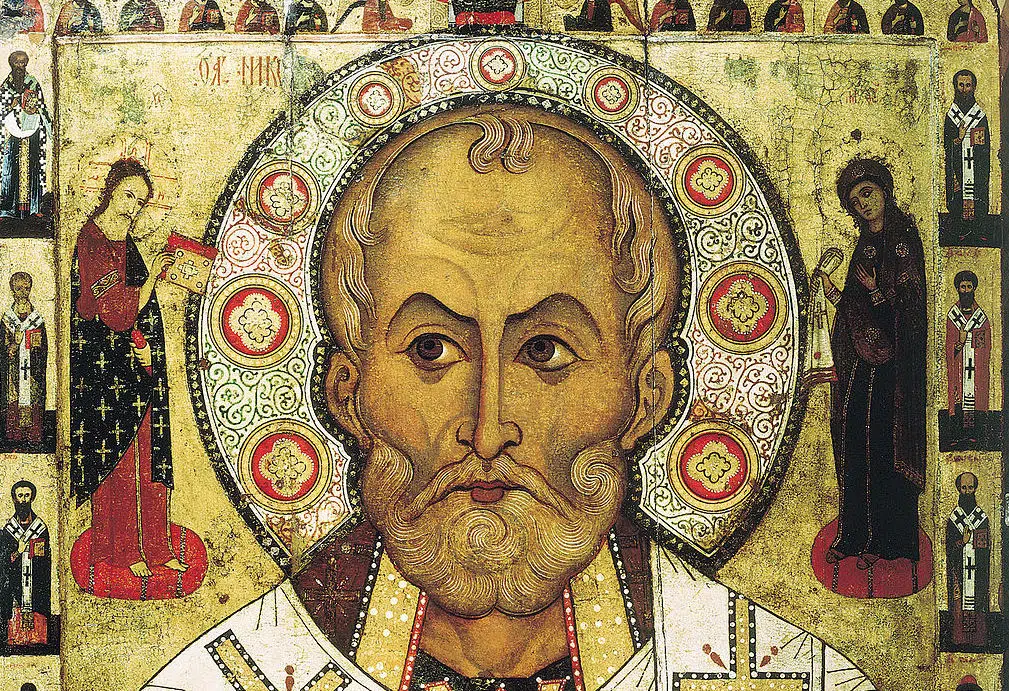
The world knows Santa Claus as the symbol of Christmas, who brings kids toys, but he is actually a modernized version of Saint Nicholas, the devoted Greek bishop who lived in the fourth century in the Lycian town of Myra in Asia Minor.
Although Santa Claus, or Father Christmas, is the figure that all nations with Christian traditions associate with Christmas, one major difference exists between the Greeks and the rest of the world regarding the identity of the man who brings good children their gifts at this most special time of year.
In Greece, the Americanized name ”Santa Claus” simply does not exist, and children always wait for their beloved Agios Vasilis (Saint Basil) to bring them gifts on New Year’s Day.
Modern popular traditions both in Greece and abroad have associated the figure of Santa with a jolly, plump old man with a snow-white beard and a bright red suit trimmed with white fur.
Although this classic image of Santa Claus originated from western Europe, his name is clearly a derivation of “Saint Nicholas” since “Claus” is a foreshortened Germanic version of the name “Nicholas.”
The name Sinterklaas, or St. Nicholas, as he was known by the Germanic peoples became Anglicized to “Santa Claus.”
This happened as part of a completely natural merging of traditions between many of the early western European immigrants who made America their new home.
Depictions of Santa Claus come from US and Canada
Santa Claus is generally depicted nowadays as a portly, jolly, white-bearded man wearing a red coat with white fur collar and cuffs, white-fur-cuffed red trousers, red hat with white fur, and black leather belt and boots and carrying a bag full of gifts for children.
This image became popular in the United States and Canada in the nineteenth century due to the significant influence of Clement Clark Moore’s 1823 poem “A Visit from St. Nicholas.”
American caricaturist and political cartoonist Thomas Nast also played a role in the creation of Santa’s image as we usually see him portrayed today.
The Greeks, however, had never associated Saint Nicholas with Christmas to such an extent as the Dutch and the other Western Europeans did.
Saint Nicholas’ main characteristic in Greek folk tradition is that he serves as the protector of the seas and the patron saint of sailors.
St Nicholas, or Santa Claus, was Bishop of Myra
Serving as Bishop of Myra, he was known also as a participant in the seminal Council of Nicaea in the year 325, during which the adoption of the Nicene Creed took place. The Creed forms the basis of the belief system of Christians.
He was later cast into prison during the persecution of Diocletian, but was released after the accession of Constantine.
Reported at the time to have spoken out vociferously against the Arians, or those who believed that Jesus Christ was not divine but completely human, an anecdote that has survived through the millennia says that Nicholas either slapped the face of or boxed the ears of one of his ideological opponents.
Whether or not this is true, another action of his, much more generous, was recorded as well. A poor family in Myra with many daughters was known to have fallen on hard times — which were so dire, in fact, that the father was considering selling one of his daughters into slavery just so the others could survive.
To save her from that horrendous fate, St Nicholas threw gold coins down the chimney of the man’s house, thereby saving her and rescuing the family from their predicament.
Whether or not things happened in exactly this way, it was St. Nicholas who was said to have committed this act of kindness, and this is the reason why he is associated with chimneys.
One version of the story even says that the gold coins landed in the girl’s stocking, which she had hung up on the mantel to dry.
And of course this is why gold coins — actually made of chocolate– are given at Christmastime.
Fewer than 200 years after Nicholas’s death, St. Nicholas Church was built in Myra under the orders of Theodosius II over the site of the church where he had served as bishop, and Nicholas’s remains were moved to a sarcophagus in that church.
In 1087, the Christian Greeks of the region were subjugated by the newly arrived Muslim Seljuk Turks, and soon afterward, a group of merchants from the Italian city of Bari removed the major bones of Nicholas’s skeleton from his sarcophagus in the church without authorization and brought them to their hometown.
They are now enshrined in the Basilica di San Nicola. The remaining bone fragments from the sarcophagus were later removed by Venetian sailors and taken to Venice during the First Crusade.
See all the latest news from Greece and the world at Greekreporter.com. Contact our newsroom to report an update or send your story, photos and videos. Follow GR on Google News and subscribe here to our daily email!



